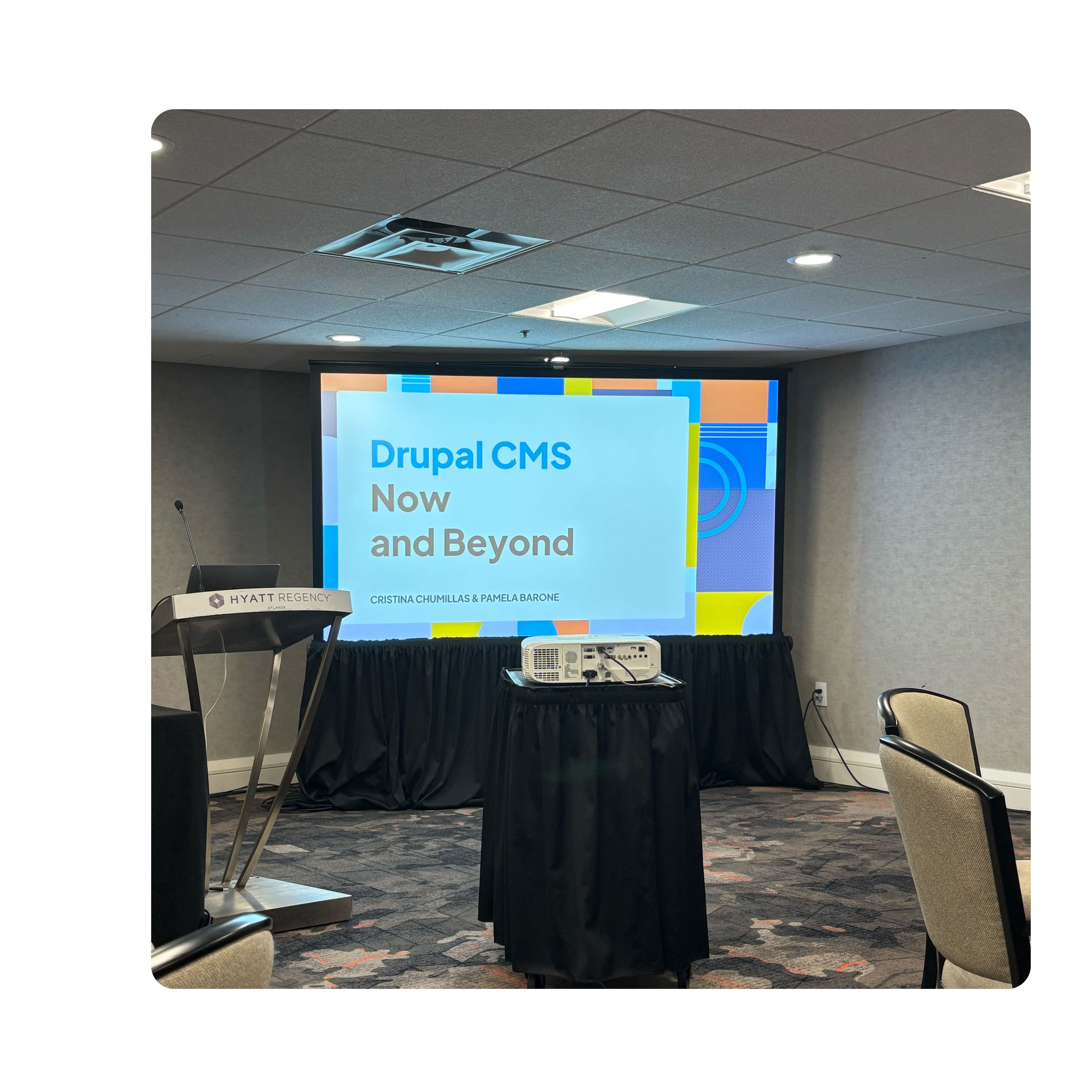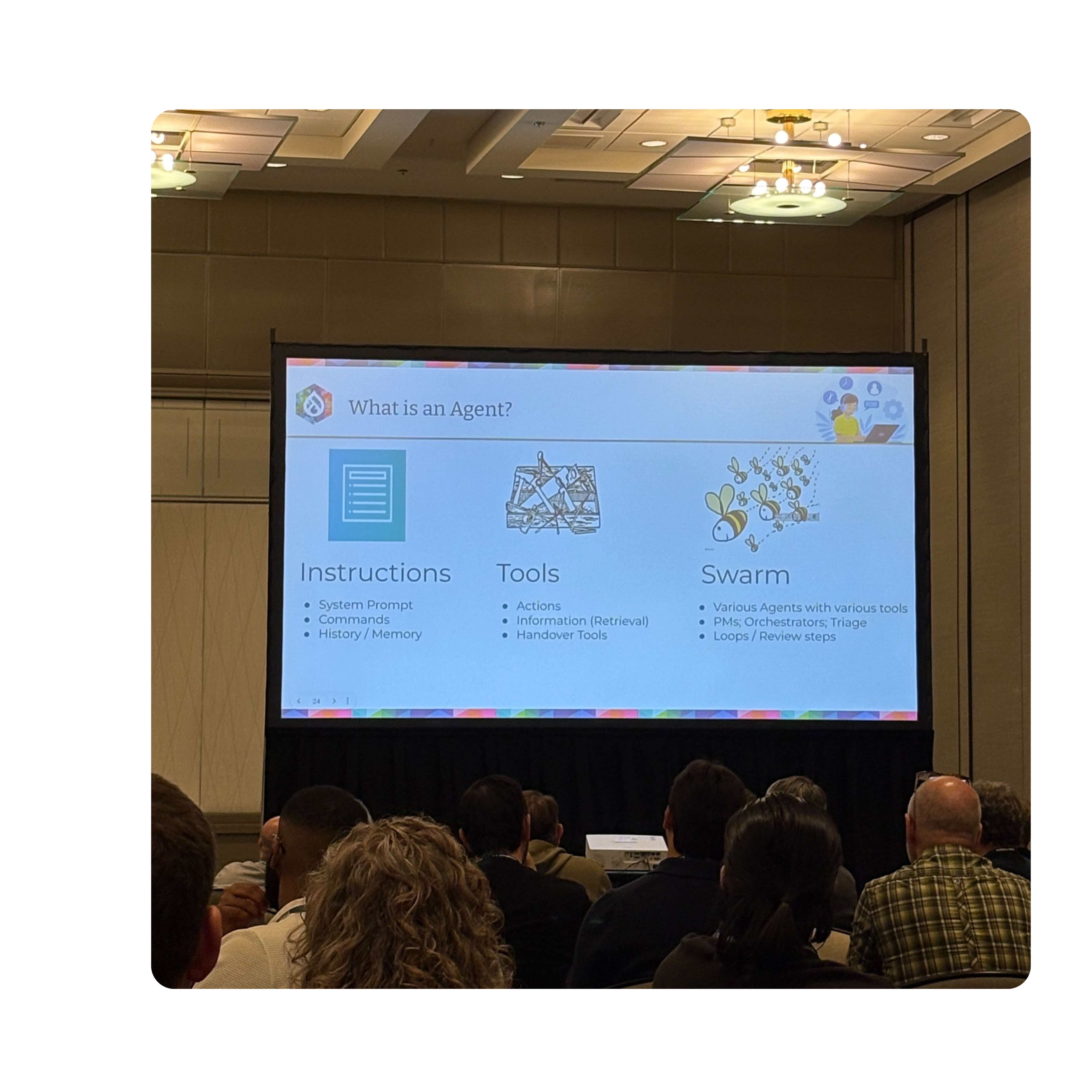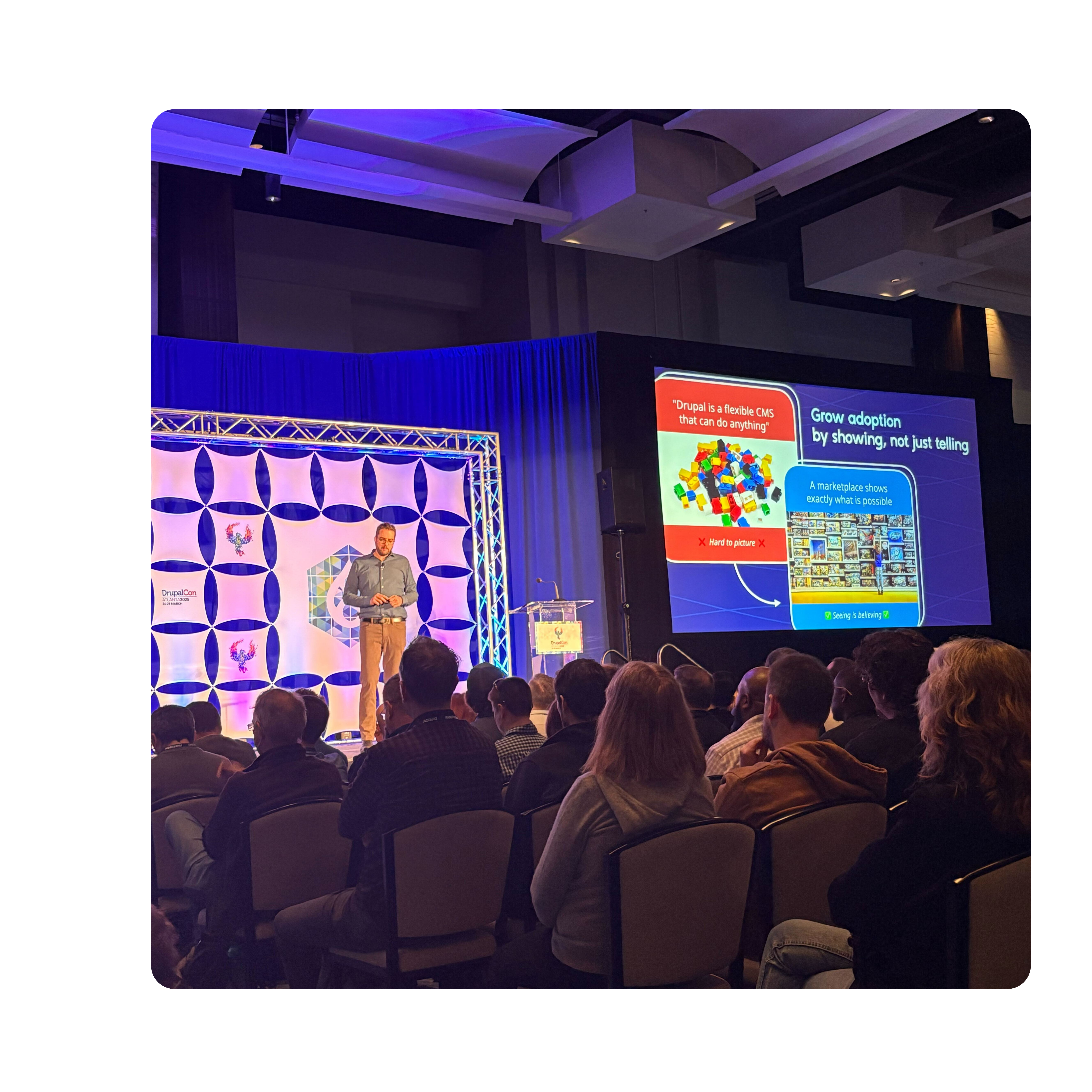DrupalCon Atlanta - An Introduction
At the end of March I crossed the Atlantic and attended DrupalCon Atlanta. This was my first North American DrupalCon, but not my first DrupalCon ever, having attended DrupalCon Amsterdam 2019 and presented at DrupalCon Prague 2022.
It can be a common misconception that DrupalCon attendance is reserved for developers only. Of course there are plenty of tekkers sessions aimed at the coding community and there are dedicated spaces for code contributions but if you are working in the Drupal space, DrupalCon offers an important opportunity to understand the direction the Drupal project is heading in, Drupal Association initiatives and overall what that might mean for the work you are involved in. This is equally in terms of client roadmaps and also in terms of technical design, operational procedures and workflows. You can even get involved in non-code contributions!
In this article I will share some of my key takeaways from Atlanta, including:
- How the Drupal Association are step-changing their Drupal marketing strategy
- What was delivered in Drupal CMS 1.0 and what 2.0 will bring
- An update on Experience Builder
- Drupal and AI
The introduction of site templates and the potential for a Drupal site templates marketplace
The Drupal brand
As part of the community summit on the first day of the conference, one of the topics discussed was how the Drupal Association (DA) is taking steps to better promote Drupal. This is critical in order for Drupal to successfully compete in the marketplace against proprietary solutions with significant marketing budgets.
In recent months, Investment has been made into hiring dedicated marketing professionals into the DA team and the recently refreshed Drupal.org homepage and makers pages are testament to the ongoing efforts to really showcase what Drupal can do and prove it is a viable solution to decision makers.
It was a happy coincidence that Zoocha’s UCL case study was featured on the new homepage at the time of the summit!
The Drupal Project roadmap
The marketing focus of the DA goes hand in hand with the updates shared in the Driesnote in regards to the Drupal Project 3 year strategy.
As Dries has said previously, the goal is to be ‘the gold standard for no-code web development’ and there are a number of initiatives that support this goal - some already on the radar, others brand new and revealed for the first time in Atlanta.
Drupal CMS (previously known as Starshot)
Drupal CMS 1.0 was launched in January 2025, 8 short months after it was announced at the 2024 North American DrupalCon.
In short, Drupal CMS is a ready to use platform that provides a suite of out of the box tools. It was designed to reduce setup time, remove complexity and provide a smoother starting experience to the standard, developer-oriented Drupal Core install.
Behind the scenes it is powered by ‘recipes’, which are pre-configured packages of features, such as blogs, events or case studies. Each recipe significantly reduces the need for manual set up by automatically installing the necessary modules, setting up the content types and applying the configuration.
Importantly, Drupal CMS includes by default privacy and consent management tools, as well as an accessibility checker.
The release earlier this year was the output of unprecedented community collaboration, with ~150,000 organisation commits in 2024.
1.0 is only the beginning, however. In the Driesnote, Dries highlighted that onboarding was still an area of improvement that came from user feedback and he shared a demo of the new Drupal CMS desktop app that has been created, allowing anyone to get set up with Drupal CMS locally.
We also heard, in a session led by Drupal CMS delivery team members Cristina Chumillas & Pamela Barone, that the 2.0 roadmap includes:
- Other initiatives, such as a non-technical CMS guide, to reduce the friction of onboarding
- Further improvements to UX & design, including the use of language for non-technical users
- Migration from non-Drupal to Drupal CMS
- Multilingual
- Site templates
Version 2.0 is set to be released in line with DrupalCon Vienna in the autumn.
Experience Builder
A key takeaway from the Driesnote was an update on the highly anticipated Experience Builder (XB), designed to streamline page creation, simplify theming, and offer a more intuitive editing experience.
Aimed at both developers and content editors, it enables in-browser creation of components and blocks, reducing reliance on custom code.
There are big hopes for what XB will bring to table; Dries even stated that he believes XB could be the driver for organisations to make the switch to Drupal.
In one demo, AI agents were demonstrated in real time creating Experience Builder components using an image—signalling a potential significant leap forward in how Drupal sites could be assembled in future.
XB is set for a 1.0 release by DrupalCon Vienna (along with Drupal CMS 2.0!).
Drupal & AI
Conversations around AI & Drupal were not restricted to the Driesnote. There were a number of sessions at the conference on AI and I attended Jamie Abraham’s slot on ‘AI is the new UI’.
Here Jamie outlined that among both open source and proprietary platforms, Drupal truly stands out as a clear leader in CMS AI innovation. Competitors are not offering comparable functionality; functionality that can be a powerful ally for site builders, developers and CMS editors alike.
For example, the Drupal AI Agents module can be used together with the Drupal AI module to create a ‘text-to-action’ agent where users can, using natural language, request the system to:
- Create content types and fields
- Add or edit content
- Scrape and structure content from external sources
- Offer intelligent content suggestions, such as alt text for images
Other AI submodules discussed that could be game changing for CMS editors were things like:
- AI CKEditor; extending the editing experience with summarisation, rewriting, and tone adjustments
- AI Translate; provides a simple one-click AI powered translations, ideal for multilingual sites
It’s also worth noting that Drupal CMS includes AI tools by default.
Overall, this only scratches the surface of what Drupal AI initiatives can offer in terms of streamlining workflows, improving efficiency and increasing the quality of outputs.
Site Templates
In line with the strategic focus to make it faster and easier to launch a complete website with minimal coding, Dries also introduced ‘Site Templates’ in the Driesnote.
Drupal Site Templates will provide ready-to-use solutions for common use cases where a custom, enterprise approach is not required and there is a need to get to market as quickly as possible. Some examples referenced by Dries included university departments or campaign sites for non-profit organisations.
In essence, a Site Template is a theme coupled together with a recipe (or recipes). This represents a potential significant development as it means a new site could be created in hours vs days and weeks and offers Drupal as a viable and appealing solution for organisations with smaller budgets and non-technical teams.
In terms of where templates sit in relation to distributions, the idea is that, if successful, they will replace traditional distributions by being easier to both create and maintain.
Marketplace...
Along with Site Templates, Dries revealed that a Site Template marketplace is under consideration.
As Dries highlighted, this could bring a number of benefits to the Drupal project. This includes:
- aligning with the strategic objective to enable users to launch professional looking sites in an instance
- generating revenue opportunities for Drupal agencies and developers
- supporting Drupal’s long term sustainability through a revenue sharing model with the Drupal Association.
During the conference there was space for the wider community to be involved in the conversation as part of a Birds of Feather session and I’m sure there will be continued discussions around this over the next few months.
Summary
It is evident that there has been a lot of great progress in moving forward the ambitious three year strategy that was outlined last year. It was motivating to hear from those involved in key strategic workstreams how the community has come together to deliver in such a short timeframe and how Drupal is at the forefront of initiatives such as AI.
Looking to the year ahead, eagerly anticipated features like Experience Builder have the potential to step-change Drupal as a product for all users. In combination with Drupal CMS and site templates, it will be exciting to see what impact this has on the time to market for Drupal sites and where this positions Drupal against its competitors.
If you are interested in discussing what opportunities the Drupal roadmap presents for your organisation, please contact us at [email protected]
*To watch the Driesnote in full, go to https://dri.es/state-of-drupal-presentation-march-2025
About the author

As Delivery Director, Hannah ensures standards of quality, accountability and Agile principles are baked into each project delivered by the expansive global team. From mentoring junior Scrum Masters to facilitating the adoption of Agile in large scale public sector institutions, Hannah takes a person-centred approach to opening the doors to Agile and embracing the flexibility of the Scrum Framework.



